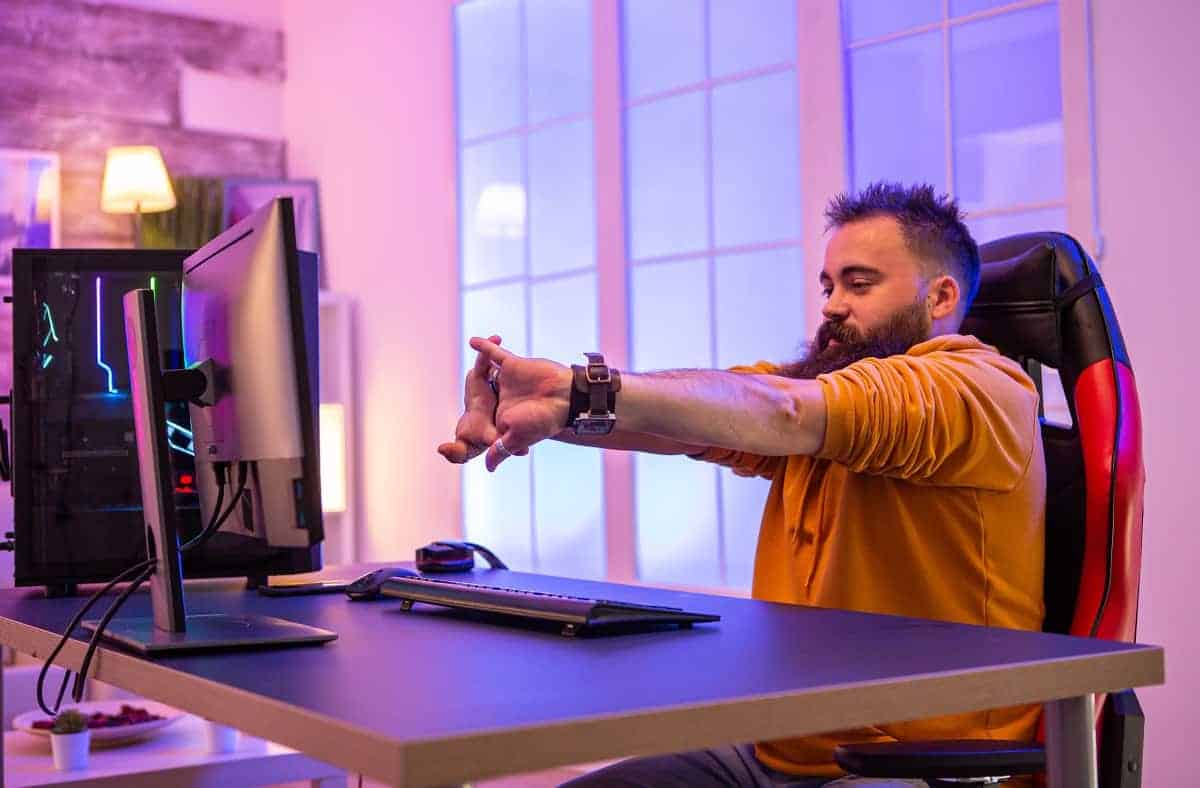
If you’re an avid gamer like so many people all around the world, then chances are that you value your comfort when playing your favorite video games. You can make a perfectly serviceable gaming space with just a chair or your bed and some pillows, along with your preferred gaming platform, of course.
But if you want to take your quality-of-life to the next level, you should definitely consider investing in a designated gaming chair. These bad boys can provide you with endless levels of genuine comfort, and the fact that they look pretty nifty and stylish is an added bonus.
Assuming you’ve already made a choice to get your hands on one of these excellent seats, this article will provide you with all the necessary information to maximize your comfort levels and optimize your gaming space. So lean back, kick your feet up, and read on to find out how to sit in a gaming chair properly.
Know Your Space
The very first thing you need to consider when optimizing your gaming space to suit your own needs is to actually know the space you’re operating in. It seems obvious, but there are certain aspects of your set-up that can easily be overlooked.
Make sure you take note of the following:
- The size of your chair (hopefully you’ve already acquired a chair that’s an appropriate size for you)
- The height of your desk
- The positioning of your screen or monitor
There are a couple of more specific details to keep in mind, and we’re going to cover all of those in the sections to follow.
The Right Size
Most people can comfortably be seated in a small or medium-sized chair. Of course, this will be dependent on your own body type, but if you’re struggling to get comfortable, you should opt for a larger chair. Depending on the brand, some chairs can even come in extra-large sizes, so don’t worry about not being able to find one that’s right for you.
Once you’re happy with your chair’s size, it’s time to make some manual adjustments. Be prepared to adjust the following:
- Seat height: You want your feet to be flat on the ground while keeping your legs bent at a 90-degree angle.
- Backrest: This mostly comes down to personal preference, but make sure that the backrest is inclined comfortably enough that you won’t have to crane your neck forward just to see the screen.
- Armrests: Your arms need to be able to relax comfortably on the rests without the need to lift your shoulders.
- Desk height: This is a little more difficult to adjust, but you want your hands and forearms to lie flat on your gaming surface, without too much strain on the upper arms.
In the next section, we’ll go more in-depth about the possible adjustments you may need to make for ergonomic, comfortable seating.
Proper Chair Adjustment
In this section, we’re going to break down each step of chair adjustment. For the sake of structure, we’re going to work our way from the bottom of the chair up.
Seat Height
Your primary consideration when adjusting the height of your seat is the length of your lower leg. Ideally, your feet should be flat on the ground and your legs should be bent at a 90-degree angle. Sometimes though, this angle can be larger if your legs are longer, but try not to push it too far.
Always make sure that your feet are flat on the floor. If your seat height is set too low or too high, it can cause unnecessary tension in your muscles, which can lead to further problems down the line.
Backrest
Adjusting the backrest is important for promoting a healthy seated posture. It should not be inclined too far forward or too far back. If the backrest is positioned correctly, you should feel that the lumbar cushion fits neatly into the curvature of your spine. Don’t worry if it feels a little uncomfortable at first; give your back some time to get used to it.
Make sure that you are always seated in an upright position. This should place a slight pressure on the curvature of your spine and keep your head above your pelvis.
Armrests
Armrests are super important to calibrate correctly as they help relieve unnecessary pressure from your shoulders, neck, and upper back. When positioned correctly, your forearms should feel comfortable and your shoulders should not feel strained (it’s important that your shoulders do not feel raised, but they also shouldn’t be slumped too much).
Ideally, the armrests should also be level with your desktop, but as long as your hands can lay flat and the angle of your arms does not extend too far beyond 90 degrees, it should be fine.
Desk Height
This can be very difficult to adjust, but it’s essential that you do what you can in order to ensure your own safety and comfort. As we said in the previous section, you ideally want your armrests to be level with the height of your desk, but if you can’t adjust the latter, try to adjust the former instead.
You may also need to adjust the placement of your screen or monitor to roughly eye-level. If your screen needs elevating, don’t hesitate to place it on a stack of hardbound books or similar objects to give it more height when needed.
Conclusion
Even with a totally ergonomic and comfortable set-up, you should remember to take regular breaks to avoid any other unnecessary health complications. Repetitive strain injuries can occur if your desk setup isn't proper. But you can dodge it by standing up from your desk once every hour, and maybe going for a walk around the block.
Other than that, hopefully this article has proven both informative and entertaining to at least some extent. Your comfort and safety are important so take it easy, adjust accordingly, take breaks regularly, and you’ll be just fine.
